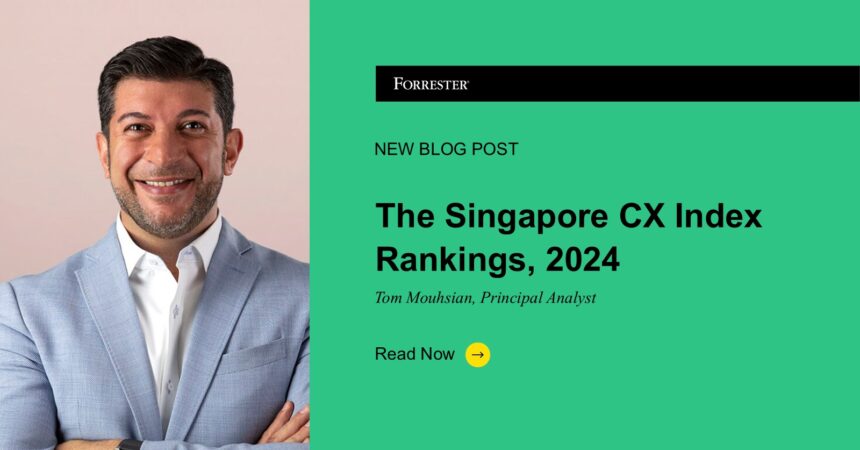Singapore’s FSI Customers Rate Their Experiences As Just “OK” In 2024
Forrester has been evaluating the quality of customer experience at leading financial service providers in Singapore since 2018. This year we’ve expanded the coverage of our Customer Experience Index (CX Index™) beyond retail banking and auto and home insurance to include retail investment service providers for the first time. Specifically, our study revealed how Singaporean customers feel about their experience with their financial service providers, as reflected in general observations below:
- The banking industry is stuck in the “OK” CX score category 5 years in a row. The multichannel banking industry average CX score of 61.3 showed no change from the previous year and extended the streak of overall CX quality that Singaporean customers rate as just “OK” to 5 years. Moreover, there has been no statistically meaningful movement observed since 2022, coinciding with the end of the pandemic and the boon of digital banking which theoretically should have created a window of opportunity for banks to make significant CX improvements but didn’t, according to our data.
- The auto and home insurance industry’s CX score dipped again but is still “OK”. Singapore-based auto and home insurance providers are steadily losing ground in CX quality since 2021 with the latest year-on-year dip bringing the industry average score down to 60.8 on our 100-point scale, less than a point shy from the “Poor” CX score category. This disappointing trend follows a period marked by the increased financial pressures felt by customers due to rising costs (affecting their price sensitivity) on one hand, and the substantial spike in claims in 2023 due to higher motor and home incident rates (affecting insurers’ margins), on the other.
- The investment service providers delivered “OK” CX, in line with the banks. Singaporean customers who use investment services rated their experience as “OK”, giving the industry an average score of 63.0. We didn’t find any support for the hypothesis that investment service providers are better equipped, resourced, or funded to deliver higher CX quality than their banking peers. On the contrary, we found that retail investment services suffer from similar issues and challenges as traditional banking services. However, due to limitations of the survey that is conducted online, we didn’t attempt to poll high-net-worth or private banking customers whose opinions may differ from retail investors.
- The narrow range of CX scores points to the lack of competitive differentiation. In all three industries covered in our Customer Experience Index (CX Index™) study this year we’ve observed a narrow gap between the top and bottom CX scores. In the case of banking and auto and home insurance, industries we’ve evaluated for multiple years, the competitive gap is becoming narrower and the score concentration is becoming higher which makes it more difficult to distinguish the leaders from the laggards. In addition, year on year CX score differences for brands included in the index are mostly statistically insignificant, showing no real change. This forms an overall disappointing trend for CX in Singapore in 2024.
- HSBC and Singlife earned the top CX scores in the 2024 CX Index rankings. Despite the meek industry-level CX results, HSBC and Singlife managed to stand out from the rest by capturing the highest scores in their respective industries. For example, HSBC had the highest CX Index scores in both the banking (65.4) and investment industry (66.1) and received top ratings in metrics related to customer loyalty, satisfaction, forgiveness, and brand alignment with customer values. Singlife outpaced its peers in the auto and home insurance industry with the CX score of 62.9 and led the field in customer forgiveness and brand alignment metrics.
- Hybrid experiences had higher customer ratings than either digital or physical. Once again, Singaporean financial services customers served by all three industries we covered in the study, gave higher ratings to hybrid experiences that involve a mix of physical and digital interactions, as opposed to digital-only or physical-only interactions. Specifically, customers found hybrid experiences significantly easier, more effective, and more emotionally positive across all three sectors: banking, auto and home insurance, and investment. Digital-only CX had a slight advantage over physical-only CX, although both failed to rise above 50%, in terms of the number of customers who agreed that experiences there were either easy, effective, or emotionally positive.








